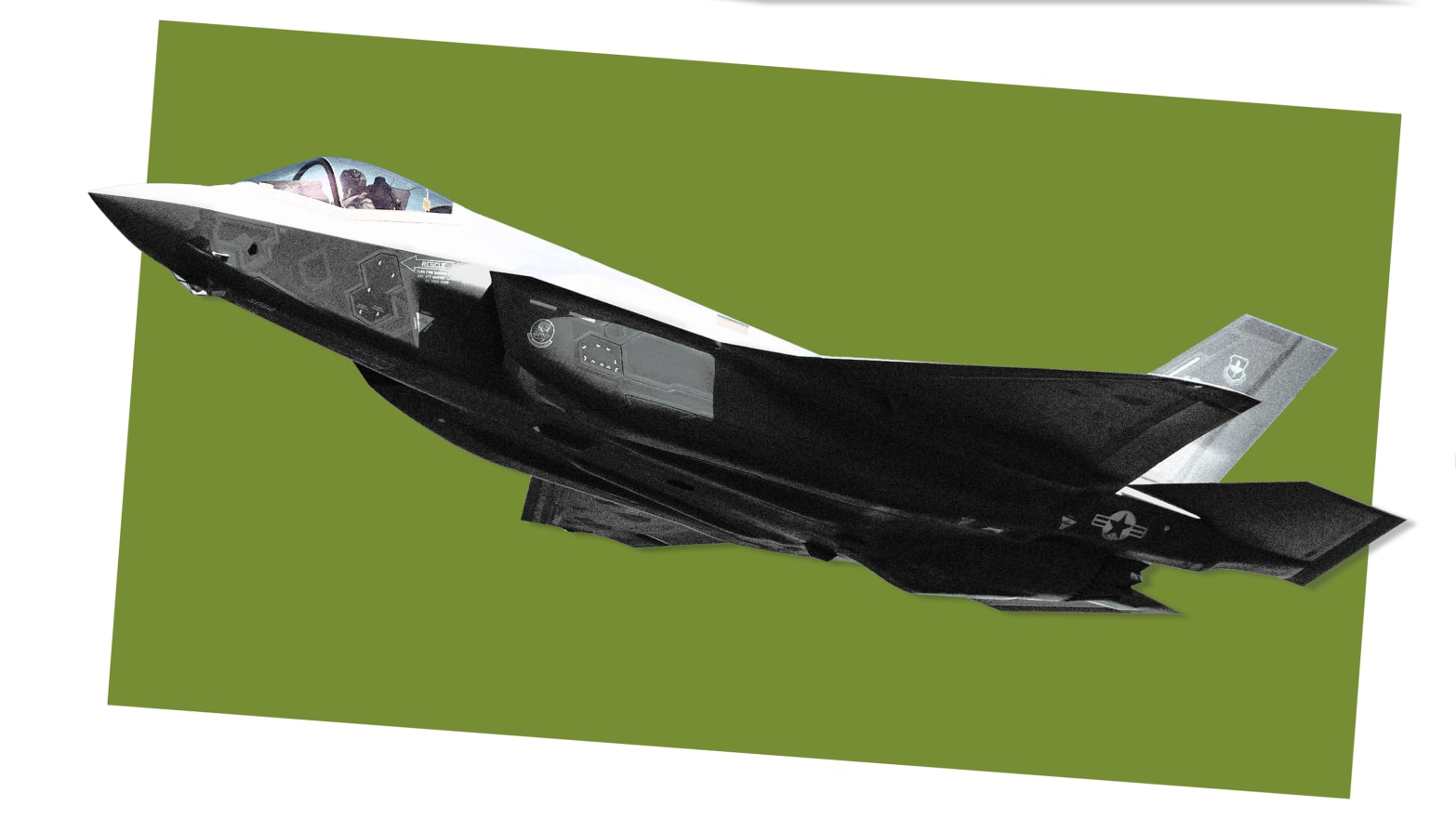Also, some versions of the F-35 can’t accelerate to supersonic speed without melting their own tails or shedding the expensive coating that helps to give the planes their radar-evading qualities.
The Pentagon’s $400-billion F-35 Joint Strike Fighter program, one of the biggest and most expensive weapons programs in history, has come under fire, so to speak, over more than a decade for delays, rising costs, design problems and technical glitches.
But startling reports by trade publication Defense News on Wednesday revealed flaws that previously only builder Lockheed Martin, the military, and the plane’s foreign buyers knew about.
The newly-exposed problems underscore the potential fragility of American air power as the armed services work to replace more and more old fighters with as many as 2,300 F-35s while also reconfiguring to confront the increasingly deadly Chinese and Russian air forces.
The problems might also help to explain why acting defense secretary Patrick Shanahan reportedly described the F-35 program as “fucked up.”
Defense News obtained military documents detailing a wide range of serious problems with two of the three versions of the F-35. The Air Force’s F-35A appears to be exempt from the latest flaws, but the Marine Corps’ vertical-landing F-35B and the Navy’s carrier-compatible F-35C both suffer what the services call “category 1” deficiencies. (In military parlance, a category 1 flaw in a plane can prevent a pilot from accomplishing their mission.)
The F-35 program and the office of the secretary of defense did not respond to requests for comment.
One problem cropped up during test flights in 2011, Defense News reported, citing the trove of military documents. In the 2011 tests, at least one F-35B and F-35C both flew at speeds of Mach 1.3 and Mach 1.4. A post-flight inspection in November 2011 revealed the F-35B sustained “bubbling [and] blistering” of its stealth coating.
Further supersonic tests in December 2011 revealed structural damage on an F-35C resulting from the extreme heat coming from the plane’s single Pratt & Whitney engine, one of the most powerful fighter engines ever made.
To avoid similar damage, the military has limited F-35B and F-35C pilots to flying at supersonic speed for less than a minute at a time.
But that could make it impossible for aviators to keep up with, or avoid, Russian and Chinese fighters flying faster than the speed of sound without any restrictions. “It is infeasible for the Navy or Marine Corps to operate the F-35 against a near-peer threat under such restrictions,” Defense Newsparaphrased the documents as saying.
The test reports Defense News obtained also reveal a second, previously little-known category 1 deficiency in the F-35B and F-35C aircraft. If during a steep climb the fighters exceed a 20-degree “angle of attack”—the angle created by the wing and the oncoming air—they could become unstable and potentially uncontrollable.
To prevent a possible crash, pilots must avoid steeply climbing and other hard maneuvers. “Fleet pilots agreed it is very difficult to max perform the aircraft” in those circumstances, Defense News quoted the documents as saying.
The implications are chilling. In a dogfight with a Russian or Chinese jet that can exceed a 20-degree angle of attack, an American flying and F-35 could be at a serious disadvantage.
The revelation of the two performance flaws comes at a critical time for the 18-year-old F-35 program. Pentagon officials plan to declare an end to the testing phase of the F-35’s development sometime in late 2019 and clear the fighter for mass production.
The stealth fighter enjoys strong support from Congress, owing in part to the thousands of jobs the JSF program sustains, albeit at a cost of around $10 billion a year to U.S. taxpayers. In anticipation of a green light for mass production, the Pentagon and Lockheed in early June reached an informal agreement on a $34-billion deal for 470 F-35s.
The Air Force told The Daily Beast it is confident in its own version of the F-35. “Fielding and deployment plans for the F-35 have not changed,” the Air Force’s Air Combat Command said in a statement. “The F-35 plays an essential role in U.S. air combat superiority and we are highly confident in its capabilities and performance.”
The military and Lockheed have identified possible fixes to all the problems Defense News revealed. A new coating could minimize heat damage. Better flight-control software could mitigate the risk of a crash during hard maneuvers. “We expect this item to be resolved or downgraded,” Greg Ulmer, a Lockheed vice president, told Defense News in reference to crash risk.
But if the program doesn’t apply the fixes before F-35 production picks up, it’s possible the deficiencies will become “baked in” on scores or even hundreds of F-35s. Retroactively fixing deficient jets could cost billions of dollars.
To a great extent, the damage is done. Owing to the Pentagon’s controversial decision to manufacture F-35s while still testing them, Lockheed has delivered around 400 early-model F-35s to the U.S. Air Force, Navy and Marine Corps and to U.S. allies such as the United Kingdom and Israel.
The Air Force, Marines, and Israel have already deployed their F-35s in combat against lightly-armed militant groups.
More than 100 of those early F-35s are B-models that cannot safely fly fast or maneuver hard. They’ll need fixing. It won’t be cheap. The military was already spending billions of dollars modifying older F-35s. That bill could grow to cover the flaws Defense News revealed.
Fixes could take a while. “The services will have to wait five years or more to get a fully functional aircraft, if they ever do,” Dan Grazier, an analyst with the Project on Government Oversight in Washington, D.C., told The Daily Beast.
In the meantime, the armed services possess scores of F-35s they cannot safely send into high-tech combat, according to Grazier. “The program is definitely not ready for active service.”



 www.thedailybeast.com
www.thedailybeast.com

